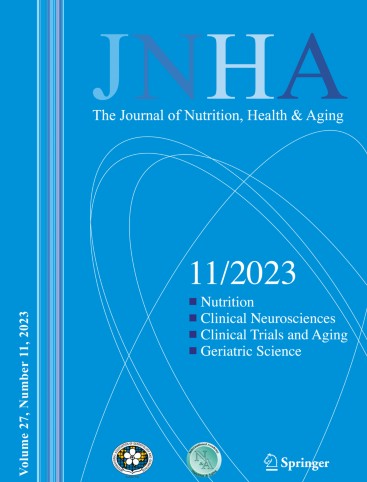Association between objective physical activity and frailty transition in community-dwelling prefrail Japanese older adults
IF 4.3
3区 医学
Q1 GERIATRICS & GERONTOLOGY
引用次数: 0
Abstract
Background
Frailty transition is common, and increased physical activity can prevent it. An objective assessment of physical activity could eliminate bias and provide more precise information on the association between frailty transitions and physical activity.
Objectives
This study aimed to examine the association between objective physical activity and frailty transition in community-dwelling prefrail Japanese older adults.
Design
This is a retrospective cohort study based on the National Institute for Longevity Science-Longitudinal Study of Aging data.
Participants
A total of 387 community-dwelling older adults with prefrailty were enrolled (mean age 72.0 years).
Measurements
Frailty was assessed using modified components of the Cardiovascular Health Study criteria, and frailty statuses were reassessed two years later. The frailty transitions were categorized into three groups: deterioration, persistence, and reversal. Participants wore a uniaxial accelerometer to assess the physical activities. Differences in baseline characteristics according to frailty transitions were assessed. To compare the baseline objective physical activities based on frailty transition, a general linear model and a logistic regression model were used.
Results
Among the 387 participants, 40 (10.3%) deteriorated to frailty, 97 (25.0%) reversed to robust, and the majority (n = 250, 64.6%) remained prefrail after a 2-year follow-up. Using the general linear model, after adjusting for other factors, total energy expenditure (TEE) in the reversal group was significantly higher than that in the deterioration and persistence groups. No differences in TEE were observed between the persistence and deterioration groups. No significant differences existed in the numbers of daily steps, exercise energy expenditure (EEE) and physical activity with different intensity among these three groups. The logistic model also showed a significant association between TEE and the reversal of frailty.
Conclusion
Frailty transitions were common in the Japanese prefrail population. This study showed that a higher TEE was positively associated with frailty reversal in prefrail older adults. Promoting proactive programs for older adults to increase physical activity could help them stay healthy and prevent frailty deterioration.
求助全文
约1分钟内获得全文
求助全文
来源期刊
CiteScore
7.80
自引率
3.40%
发文量
136
审稿时长
4-8 weeks
期刊介绍:
There is increasing scientific and clinical interest in the interactions of nutrition and health as part of the aging process. This interest is due to the important role that nutrition plays throughout the life span. This role affects the growth and development of the body during childhood, affects the risk of acute and chronic diseases, the maintenance of physiological processes and the biological process of aging. A major aim of "The Journal of Nutrition, Health & Aging" is to contribute to the improvement of knowledge regarding the relationships between nutrition and the aging process from birth to old age.

 求助内容:
求助内容: 应助结果提醒方式:
应助结果提醒方式:


